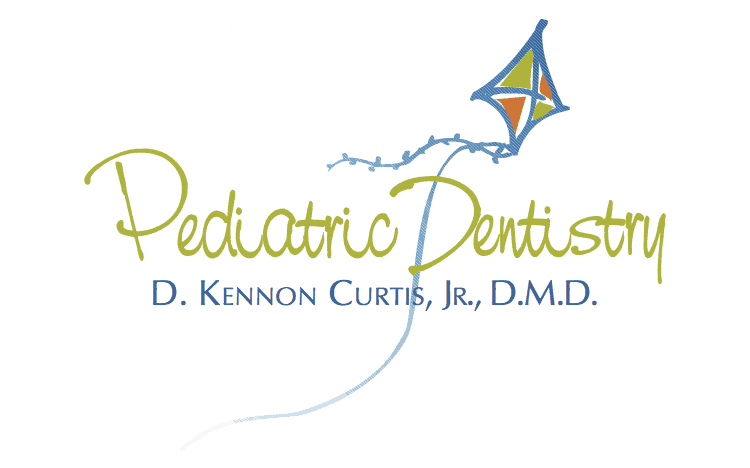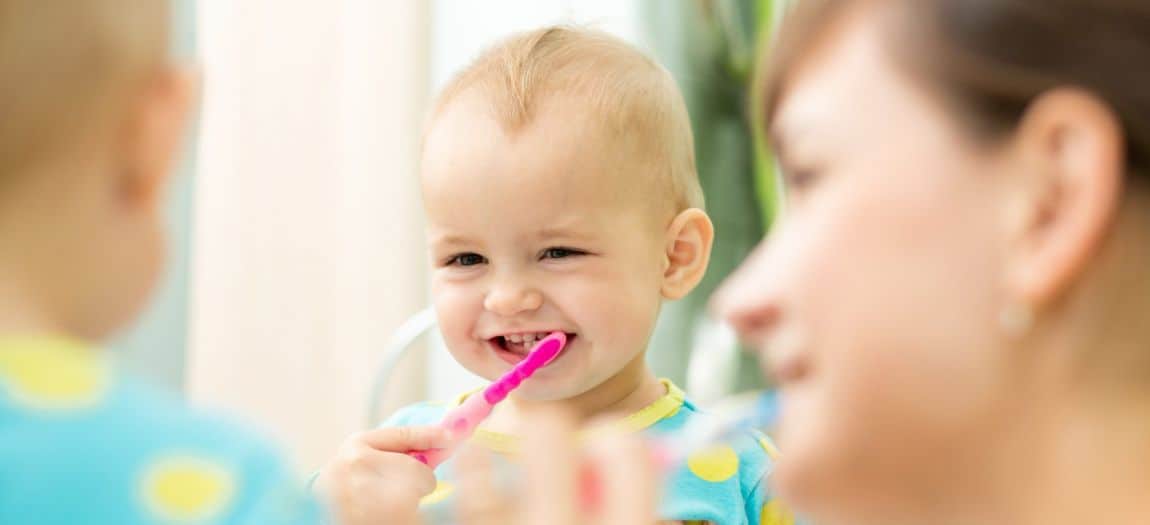Infant Dental Care
The sooner the better! Starting at birth, clean your child’s gums with a soft infant toothbrush or a spiffie (pictured). As soon as the teeth begin to appear, start brushing twice daily using fluoridated toothpaste and a soft age-appropriate sized toothbrush. Use a “smear” (picture) of toothpaste to brush the teeth of a child less than two years of age. For the 2-5 year old, dispense a pea-size (picture) amount of tooth paste. Remember, it is certainly ok to let your child have a turn brushing, but the parent must follow-up to ensure a thorough job.
"The first visit by the first birthday" sums it up. Your child should visit a pediatric dentist when the first tooth comes in, usually between 6 and 12 months of age. The goal is to get your child off to a smart start by implementing at-home strategies and habits that will help ensure a life-time of optimal oral health. This visit will also establish a dental home for your your child. Babies are not placed in a dental chair, but rather examined in a comfortable room while lying or sitting in a parent’s lap. see video.
The most important reason is to begin a thorough prevention program. Dental problems can begin early. A big concern is Early Childhood Caries (formerly known as baby bottle tooth decay). Once a child’s diet includes anything besides breast-milk, erupting teeth are at risk for decay. The earlier the first dental visit, the better chance to establish effective strategies and habits to prevent problems. Children with healthy teeth chew their food easily and smile with confidence. Getting your child off to a smart start will help ensure a lifetime of good oral health.
Even the healthiest juices contain a lot of sugar that can contribute to tooth decay. Juice is fine in moderation- Limit the amount to no more than 4 ounces per day and offered at meal times only. (policy statement by American Academy Of Pediatrics) Do not let your child of any age continually sip on a bottle, sippy cup, or juice box at will throughout the day. Also, never put your child to bed with any liquid that contains sugar. This includes milk.
Beginning at about 6 months and continuing to age 3, your child will have periods of tooth eruption, preceded by teething. symptoms can include more drooling than normal,mild sniffles, crankiness, and sore gums. Sucking on a clean, chilled teething ring, can really help with discomfort. Many babies find comfort in having their gums massaged with a clean finger or wet spiffie (picture). Over-the -counter analgesics (Tylenol) can also be helpful, especially at bedtime. Just be sure to check with your pediatrician first, and follow dosage instructions carefully.
The frequency of visits for every patient should be tailored to the needs of the family. However, for the first three years we recommend a recare schedule of every six months. This gives Dr. Curtis and his team the opportunity to address any concerned or issues that you may be having, to monitor the eruption of the teeth and the development of the oral structures, and to identify emerging problems while they are reversible. Equally important, seeing babies and toddlers more frequently gets them accustomed to the environment, and ready to make the transition to the dental chair around age three.

